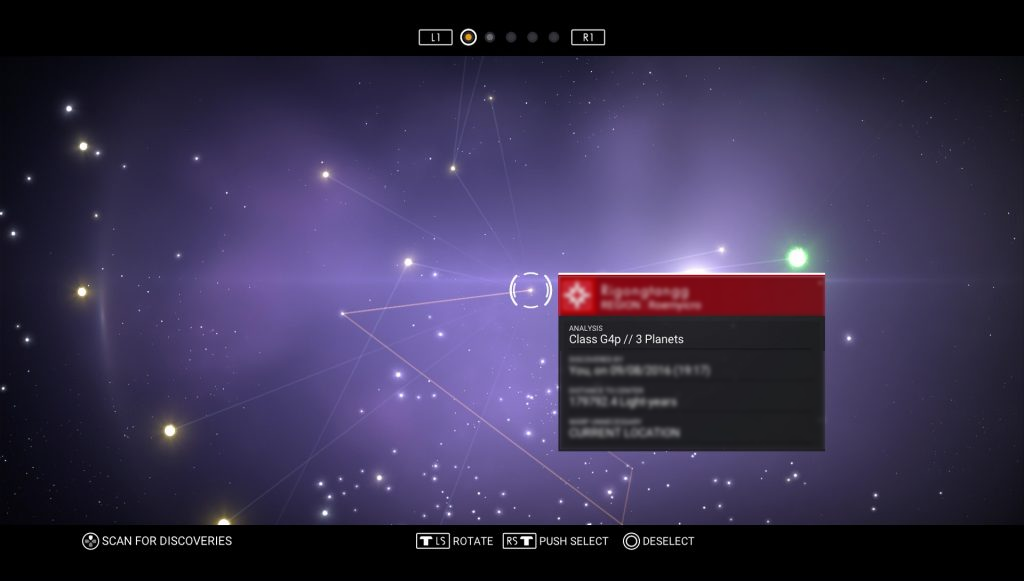
Star systems in No Man’s Sky can be organized by their spectral class. Certain classes are more difficult to reach than others, as traveling to some requires hyperdrive upgrades. It’s speculated that the harder-to-reach classes contain planets with rarer resources and more interesting life. In this article, we’ll map out the different spectral classes, the technology you’ll need to reach each type of class, and the benefits of each type.
Yellow Stars – Class G and F
These stars are not only the most common system, but they’re the default systems you encounter at the start of the game. In these systems, you can expect to find common resources and a fair amount of barren planets. It’s been speculated that these are the types of planets typically found along waypoints in the game.
Red Stars – Class K and M
To reach these star systems, you’ll need a Warp Reactor Sigma upgrade for your hyperdrive. The Sigma upgrade can be built with a blueprint using a Dynamic Resonator, Iridium, and Copper. You can find the blueprints from sentient aliens or factories that you raid. Additionally, the upgrade could already exist on a starship you come across.
When using your hyperdrive upgrades, it’s important to note a few things. First, your upgrades stack – so there’s no need to get rid of your Warp Reactor Sigma once you obtain higher upgrades. Also, the upgrades will need to be placed next to other warp upgrades or the hyperdrive in your starship’s inventory to function properly.
Planets in red star systems are expected to have more rare resources on them and more planets with flora and fauna.
Green Stars – Class E
To visit green stars, you’ll need a Warp Reactor Tau upgrade. The Tau upgrade can be built with a blueprint using two Dynamic Resonators, Nickel, and Aluminium. As with the Sigma upgrade, finding the Tau upgrade or blueprints is pretty random.
These systems will have even rarer resources and more planets will have lush vegetation and life.
Blue Stars – Class B or O
Both the The Warp Reactor Tau and Theta upgrades are required to travel to blue star systems. The Warp Reactor Theta is especially difficult to craft, as it requires three Dynamic Resonators, Gold, and Emeril – along with the blueprints.
Blue star systems have a chance to contain even more rare resources, and the systems’ planets have a higher chance of having plentiful plant and animal life.
In addition to the class letters, each star system will also include a number 0-9 and a final letter of f, p, pf, or blank. While it’s not currently known what these numbers and letters may represent, there are some speculations on the wiki’s spectral class page.
The number of star system types still hasn’t been confirmed, but these four have been discovered in the game thus far. As adventurers continue to traverse the stars, we’ll learn about more spectral classes and systems.
If you discover any additional information about spectral classes or star systems that you’d like to share, feel free to contribute to the No Man’s Sky Wiki on Gamepedia. Thanks to Redditor Harvoification for organizing this information.

Brianna Reed

Brianna engages with the Gamepedia community through editorial content and social media. When she’s not busy tweeting about gaming news, she enjoys playing tabletop games, spending time outdoors, and binge-watching sci-fi.




































































































